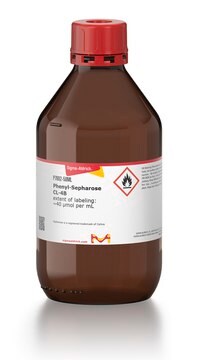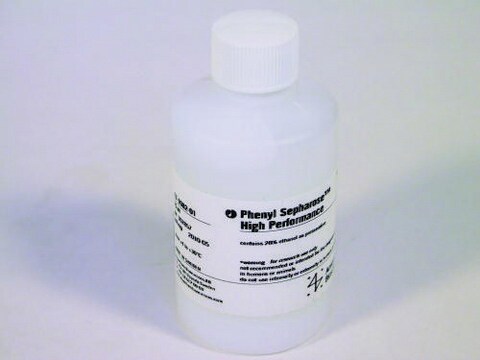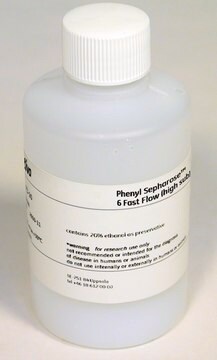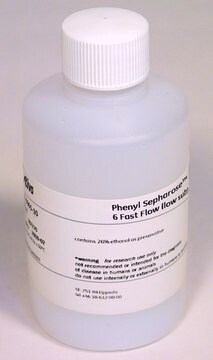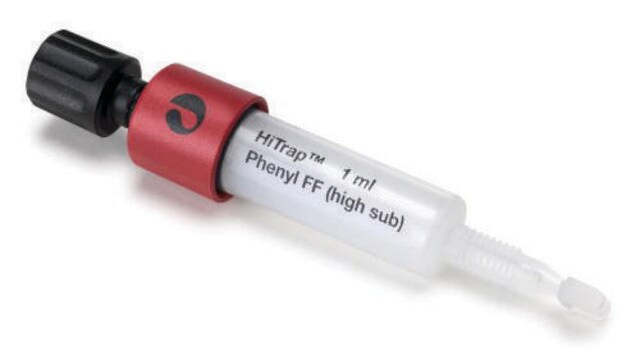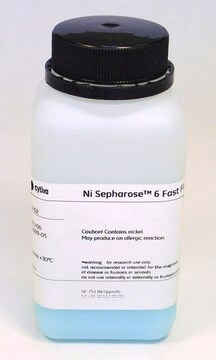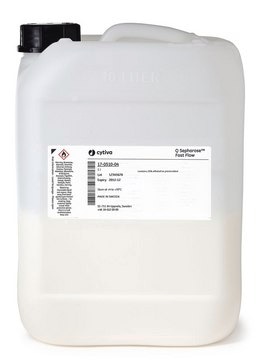P2459
Phenyl-Sepharose 6 Fast Flow
high substitution, extent of labeling: ~40 μmol per mL (high substitution)
Synonym(e):
Phenyl-Agarose
About This Item
Empfohlene Produkte
Qualitätsniveau
Form
suspension
Kennzeichnungsgrad
~40 μmol per mL (high substitution)
Matrix
agarose, 6% cross-linked
Matrixaktivierung
epichlorohydrin
Matrixanbindung
ether
Matrix-Spacer
3 atoms
Partikelgröße
45-165 μm
Lagertemp.
2-8°C
Suchen Sie nach ähnlichen Produkten? Aufrufen Leitfaden zum Produktvergleich
Allgemeine Beschreibung
Anwendung
Physikalische Form
Rechtliche Hinweise
Ähnliches Produkt
Signalwort
Warning
H-Sätze
Gefahreneinstufungen
Flam. Liq. 3
Lagerklassenschlüssel
3 - Flammable liquids
WGK
WGK 3
Flammpunkt (°F)
104.0 °F
Flammpunkt (°C)
40 °C
Analysenzertifikate (COA)
Suchen Sie nach Analysenzertifikate (COA), indem Sie die Lot-/Chargennummer des Produkts eingeben. Lot- und Chargennummern sind auf dem Produktetikett hinter den Wörtern ‘Lot’ oder ‘Batch’ (Lot oder Charge) zu finden.
Besitzen Sie dieses Produkt bereits?
In der Dokumentenbibliothek finden Sie die Dokumentation zu den Produkten, die Sie kürzlich erworben haben.
Kunden haben sich ebenfalls angesehen
Unser Team von Wissenschaftlern verfügt über Erfahrung in allen Forschungsbereichen einschließlich Life Science, Materialwissenschaften, chemischer Synthese, Chromatographie, Analytik und vielen mehr..
Setzen Sie sich mit dem technischen Dienst in Verbindung.